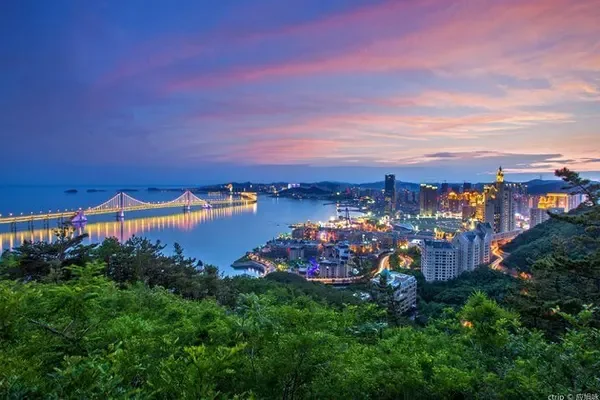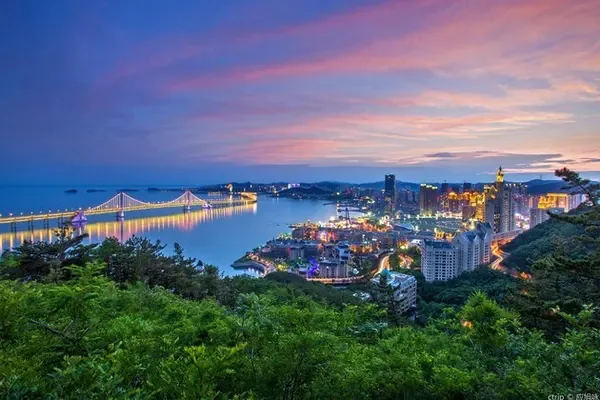On October 17, after breakfast, drive south from Korla to Luobu Village via Yuli County. This scenic spot is almost a must-see when driving in southern Xinjiang. The photo was taken at the Visitor Center of the Rob Village.
The village of the Rob people is located in the southwest of Yuli County, about 35 kilometers away from the county seat. It used to be one of the largest villages of the Rob people. Today, many buildings with the characteristics of the Rob people have been built on the original basis to make a huge one that reflects the Luobu people. Cultural humanities tourism area. The photo was taken in the ticket hall of the Tourist Center of the Rob Village.
Here you can see the edge of the Taklamakan Desert, the accompanying sparse poplar trees, the Tarim River disappearing in the desert, the mysterious Rob people, and primitive and simple residential buildings. The picture is a guide map of the Rob village.
In autumn, Populus euphratica, desert, Tarim River, and camel caravan form a beautiful natural picture. Each tourism project with distinctive features and full sense of experience has attracted a large number of tourists from inside and outside Xinjiang. Tourists need to take a shuttle bus here to enter the village. The picture shows the shuttle bus in the Luobu village.
Entering the scenic spot, the first thing that catches the eye is the gate of the Luobu village. The gate of the scenic spot is very distinctive. The gate is composed of village flags, fences and ancient decorations. The semicircular patterns on both sides symbolize the sun.
The second gate is the main gate of the village, also known as the "Widden Gate". It adopts the shape of the boat-shaped cap of the Rob people, reflecting its unique aesthetic concept.
The area of the scenic spot is very large. As soon as you enter the scenic spot, there is a desert station.
Desert Station provides lunch for visitors to Desert Station. This is the staff at kebabs.
This is the staff wearing kebabs.
This is the special fish that the staff grilled in the village of the Rob people.
Grilled fish are coming out one after another
This is a 150 million-year-old Populus euphratica fossil.
The dead Populus euphratica in the villages of the Rob people have a history of more than two thousand years.
The shuttle bus is not far away, and you can see the surrounding sand dunes and Gobi scenery along the way.
The shuttle bus is not far away, and you can see many tall poplar trees along the way, and the scenery is desolate and magnificent. The picture shows a herd of donkeys on the side of the road.
The shuttle bus arrives at Fairy Lake. In the vast desert, there is a blue lake is also very magical. The principle may be the same as that of the Crescent Spring in Dunhuang, in that groundwater infiltrates to form the lake surface. Xianshui Lake has a large area because it is very close to the Tarim River.
The Taklimakan Desert, the largest in China, is in the south of the scenic spot, rolling, boundless and surging. In the Fairy Lake Scenic Area, you can ride the "desert boat" to wade through the depths of the sandy sea, see the desert scenery, listen to the melody of camel bells, and feel relaxed and happy.
In the Fairy Lake Scenic Area, you can take a beach jeep to wash the sand.
In the Fairy Lake Scenic Area, you can take a glider for a bird's-eye view.
We drove around the lake for a week and finally arrived at the village of the Rob people. Today's Rob people live peacefully on the edge of the Taklimakan Desert, and the Tarim River flows quietly through the village.
Along the banks of the river, there are large tracts of primitive Populus euphratica forests, and the reflection of Populus euphratica in the water has a unique charm.
Wherever the water in the desert flows, there will be Populus euphratica. Its root system can absorb water as deep as ten meters underground.
Due to the impact of the epidemic, there are not many tourists this year, and the staff who manage the cruise ships are sleeping.
The Luobu village is surrounded by the Tarim River on one side and the Taklamakan Desert on the other.
There is also a desert station here.
Populus euphratica, with its unique magical power, brings green life to the barren desert, forms a green island in the desert, and makes great contributions to slowing down the phenomenon of desertification. The Uighurs call it "the most beautiful tree" affectionately, and it is also called the soul of life in the "sea of death" by humans.
There are not many Populus euphratica in the world, but most of them are in China, and 90% of them are in Xinjiang. The largest Populus euphratica forest is in the Tarim River Basin. The picture shows my photo taken under the Populus euphratica tree.
There is also a village of the Rob people, and a suspension bridge across the Tarim River.
After entering the village, you can see the houses, wedding rooms, altars and other distinctive buildings of the Rob people, and learn about the special folk customs of the Rob people.
After entering the village, you can see the houses, wedding rooms, altars and other distinctive buildings of the Rob people, and learn about the special folk customs of the Rob people.
The Lop people live by the water and have lived among the lakes in the Lop Nur area for generations. Their lifestyle is peculiar and they have their own dialect. "Huijiang Zhi" records that "the Luobu people do not grow grains, do not herd livestock, but only fish in small boats for food, or gather wild hemp, or hunt hash birds for clothing, or use otter skins and hash bird feathers to hold Sell the goods in the city, and replace the clothes with Yibu." This is an old man named Luo Bu who is grilling fish by the Tarim River.
This Robe is treating friends to grilled fish
This is a totem of the Rob people in the village
In the village of the Rob people, many thatched sheds have been built for tourists to rest and shelter from the rain.
Centenarians are not uncommon among the Rob people. Perhaps such a simple diet is one of the secrets of their longevity. Luobu people live by water, wear apocynum clothes, drink apocynum tea and eat apocynum powder. In 1987, among the more than 3,700 centenarians in the country, there were nearly 900 around Lop Nur, which was recognized as the fourth longevity area in the world by the international natural medicine community. Hundred-year-old birthday stars can be found everywhere, with white hair and childlike face, bright ears and eyes, clear thinking, optimistic, open-minded, bold and unrestrained temperament, and they can still dance and sing to their heart's content. These are two old Robes who are demonstrating woodcarving skills.


